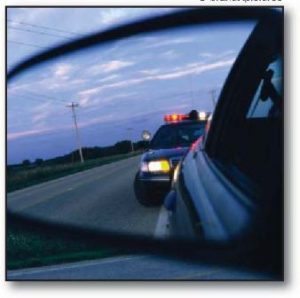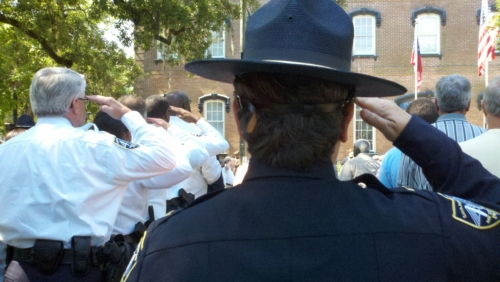An assignment working homicide cases is, without a doubt, a first class ticket to the bizarre and all things macabre.
Cops who investigate murders for a living see it all, from poisonings to gunshot wounds to decapitation by sword. The list is limited only to the far corners of a killer’s imagination. In other words, endless.
It’s bad enough working a murder scene during daytime hours, but to do so at night, by moonlight, can be a bit spooky. And, when a crime scene involves a cemetery, a shovel, and a rotting corpse … well, that’s extra spooky. No, that’s downright S.P.O.O.K.Y.
As I mentioned, killers are sometimes quite creative. I’ve investigated uses where victims were stabbed with a sharpening steel from a kitchen knife block, suffocated with a plastic grocery bag, and even one poor soul who was deliberately pushed in front of a very fast passenger train. The latter did not end well at all. Well, neither did the others, but the train … an ear there, a finger over there, a brain two miles away (beneath a bush), an eye, an arm, a leg. No, not pleasant at all.
Once in a while a killer blames his dastardly deeds on some unseen force, such as voices in his head, or as in a case I once worked, the killer blamed what he’d done on aliens from Mars.
This troubled man used an ax to hack his sister-in-law- to death. An extremely violent act. However, in stark contrast to the frenzied savagery, he was quite calm during my interview with him. He told me that Martians dictated every step of the murder, from his walk to the woodpile to get the ax to the point where he’d started hacking at his brother’s wife.
The victim’s small children were in the room, no more than fifteen feet away from the spot where their mother was being butchered by their uncle, a man who’d been released from a mental hospital two weeks prior to the murder. Doctors there said he was fine and showed no signs of violence.
Two weeks later … an ax and another separation from reality.
Blood spatter on the ceiling and walls. Dripping and slowly running down the drywall and trim. Pooling on the floor. The killer’s bloody footprints throughout the house. Blood on the bed and linen. On the clothing, arms, legs, and faces of the children. They, tiny kids, huddled together, crying. Brain matter, flesh, and bone, all scattered about.
This was the scene when I arrived.
So yes, I, like all homicide investigators, have seen a few oddities over the years. Such as …
Miss Evelyn, R.D. (Root Doctor)
I knocked on Miss Evelyn’s front door, and while waiting for someone to answer I had a look around the front porch. Nothing unusual … a one-gallon vegetable can filled with sand and topped with a handful of cigarette butts, an old wooden rocking chair, five flower pots with each containing the remnants of some sort of plant—all dead, dried up, and crispy—, a well-worn green cloth sofa, and a portable radio that was missing its volume control knob. A foil-wrapped coat hanger rose up from a hole in the top of the radio’s plastic casing. It replaced the former antenna that, at some point, had broken and was either lost or discarded as trash. Either way, the radio, in it’s present condition, had been there for as long as I could remember.
 And, as always, smack-dab in the center of the front door were three fairly fresh chicken feet that were tied together at the ankles with a piece of colorful twine. The collection of gnarly toes and bony knuckles dangled from a rusty thumbtack. Nothing odd at all … for Miss Evelyn. I knocked again. The “decor” hadn’t changed in all the years I’d gone there. Not a thing.
And, as always, smack-dab in the center of the front door were three fairly fresh chicken feet that were tied together at the ankles with a piece of colorful twine. The collection of gnarly toes and bony knuckles dangled from a rusty thumbtack. Nothing odd at all … for Miss Evelyn. I knocked again. The “decor” hadn’t changed in all the years I’d gone there. Not a thing.
I’d met Miss Evelyn after arresting a man for burglary and, while searching his pockets for weapons and other illegal items, I discovered a small flannel pouch tucked inside his wallet. I figured the contents could possibly be drugs, probably marijuana or hash, or something of that nature, so I asked the kid to level with me so I’d know what to expect.
I was surprised to hear him say that what I held in my hand was not was I’d suspected. Instead, he said, it was his “medicine bag,” a ground up mixture of chicken bones, tobacco, human hair, and herbs. Its purpose was to keep him safe. This was my first contact with a medicine bag. However, it was far from the last.
Root doctors make medicine bags containing plant and animal matter, such as human or animal bone, sage,
garlic, and even dirt from a grave. The purpose of the bag is, for example, to provide safety, heal and prevent illness, and to help ignite or halt romances, etc.
The aforementioned young burglar purchased his bag from Miss Evelyn and, since this was a totally new experience for me, I decided visit the “doctor.” Long story shortened a bit, Miss Evelyn “knew all and saw all” and she soon became one of my most reliable informants.
Her customer base was massive and many were criminals, so …
A young man, Miss Evelyn’s nephew, answered my knock at the door and then led me to the kitchen where his aunt stood at the head of the table. She was hard at work assembling her latest batch of medicine bags and other concoctions. A large black kettle was at full boil on the wood stove. I didn’t ask.
Miss Evelyn wore her usual attire, a blue bandana tied over her hair, a faded pink and blue housedress that was three sizes too big, white gym socks and black pumps. If I’d had to guess I’d say she weighed in the neighborhood of just under a hundred pounds. As always, her face was peppered with sweat and her fingernails were bitten to the quick. When she smiled it became instantly obvious that dentists were not a part of her clientele, nor had she ever, not once, crossed the threshold of any tooth doctor’s office. Her breath smelled like a rotting animal carcass. She was quirky, to say the least, and she was one of the nicest people I’d ever met.
I’d gone there that particular night to see if Evelyn could offer any insight about two bodies that had been dug up in a local cemetery. The vaults had been damaged and the caskets broken open. The grave-robbers took the same thing from each coffin—bones from the lower right arms and hands.
She said she’d heard about a couple who used human bones as part of their religious rituals. Before exhuming remains, though, they had sex atop the grave sites.
The man and woman visited Miss Evelyn to ask if she knew where they could get heir hands on a fresh corpse because they needed blood prior to embalming as part of a ceremony. Well, Evelyn was having no parts of their nonsense and sent them on their way. And that was the purpose of my visit. Miss Evelyn called me the second the grave robbers left her house.
I finally caught up with the couple when I discovered their car parked near a funeral home. They were planning to break in to steal someone’s dearly departed loved one. Fortunately, we stopped them before they committed the act.
So, writers, bizarre and macabre crime does not always come in the form of murder. Nor are the macabre criminals always the odd characters who reside at 1313 Mockingbird Lane, the house with the permanent thundercloud floating above it.
This particular couple, the grave robbers, were as normal as your neighbors. Both were professionals with public jobs. They lived in a typical neighborhood and drove a normal car. However, the contents of their trunk was a bit different than most—shovels, picks, tools for prying open caskets, and a few human and animal bones scattered about. Other than that, as normal as you and I. Well, perhaps you and I are not the best examples, but you get the idea …
***ONLY FOUR DAYS LEFT TO SIGN UP***
Reserve Your Spot Today!
Are you searching for the proper details and the perfect words to describe a scene or character? Well, here’s the solution to your troubles. Sign up today to learn from some of the best in the business!!

www.writerspoliceacademy.online
“SEARCH DOGS, SEARCH WARRANTS, A SEARCH FOR WORDS, AND LIES”

When: February 27, 2021
This daylong live and interactive seminar features three renowned professionals who will share intimate knowledge of K-9 search and rescues and the recovery of human remains; laws and procedures governing search warrants, pursuits, and police use of force; how detectives use the words of suspects and witnesses—nouns, pronouns, extra words, missing words—to detect deception or hidden information.
At the end of day international bestselling author Heather Graham presents a dynamic workshop on the craft of writing titled “It’s All in the Words.”
Instructors include Carrie Stuart Parks, Sheri Lewis Wohl, Wisconsin Judge Kevin Rathburn, and the fabulous Heather Graham Pozzessere!
Registration is officially open. Reserve your seat today!
https://writerspoliceacademy.online
FEBRUARY 27, 2021 – ONLY $99 for the full seminar!
Three renowned professionals share intimate knowledge of K-9 search and rescues and the recovery of human remains; laws and procedures governing search warrants, pursuits, and police use of force; how detectives use the words of suspects and witnesses—nouns, pronouns, extra words, missing words—to detect deception or hidden information.
At the end of this daylong, live and interactive seminar, international bestselling author Heather Graham presents a dynamic workshop on the craft of writing titled “It’s All in the Words.”
Schedule (Times are EST)
10:30 – Login and Test
10:45 – Welcome
11:00 – 12:20
Search Warrants, Pursuits, and Police Use of Force
This course will describe the general legal standards for the use of force by police such as warrants, including anticipatory, knock, and No Knock, warrants and pursuits. Instructor, Kevin Rathburn
12:20 – 12:50
Break
12:50 – 2:10
More than the Nose: K9 Search Teams in the 21st Century
K9 Search Teams in the 21st Century is a journey into the world of canine search teams. What does it take to be field ready? What makes a good search dog? Learn the difference between what it looks like on TV and what it’s really like out in the field. Learn how and why it’s changing from search and rescue volunteers to unpaid professionals. Instructor Sheri Wohl
2:20 – 3:40
Don’t LIE to Me!
Law enforcement uses numerous tools to identify deception in witnesses and suspects, depending on their background and training. Learn one of the more unique skill sets in recognizing deception through language–by reviewing the written statements. Understand how the very nouns, pronouns, extra words, missing words, and other clues alert detectives to deception or hidden information. Add richness and depth to your writing by utilizing and weaving content statement analysis into your manuscripts. Instructor, Carrie Stuart Parks
3:50 – 5:10
“It’s all in the Words”
A dynamic workshop on the craft of writing taught by one of the all-time great authors of suspense, historical romance, vampire fiction, time travel, occult, and Christmas family fare. Instructor, Heather Graham
5:10
Final words
Instructor Bios:
 Carrie Stuart Parks is an award-winning, internationally known forensic artist. She travels across the US and Canada teaching courses in forensic art to law enforcement professionals including the FBI, Secret Service, and RCMP, and is the largest instructor of forensic art in the world. Her best-selling novels in the mystery/suspense/thriller genre have garnered numerous awards including several Carols, Inspys, the Christy, Golden Scroll, Maxwell, and Wright. As a professional fine artist, she has written and illustrated best-selling art books for North Light Publishers.
Carrie Stuart Parks is an award-winning, internationally known forensic artist. She travels across the US and Canada teaching courses in forensic art to law enforcement professionals including the FBI, Secret Service, and RCMP, and is the largest instructor of forensic art in the world. Her best-selling novels in the mystery/suspense/thriller genre have garnered numerous awards including several Carols, Inspys, the Christy, Golden Scroll, Maxwell, and Wright. As a professional fine artist, she has written and illustrated best-selling art books for North Light Publishers.
 Sheri Lewis Wohl is a 30-year veteran of the federal judiciary, a search and rescue K9 handler, and the author of more than fifteen novels, several of which feature search dogs. She is a field ready member of search and rescue in Eastern Washington and for the last nine years, has been a human remains detection K9 handler deployed on missions throughout Washington, Idaho, and Montana.
Sheri Lewis Wohl is a 30-year veteran of the federal judiciary, a search and rescue K9 handler, and the author of more than fifteen novels, several of which feature search dogs. She is a field ready member of search and rescue in Eastern Washington and for the last nine years, has been a human remains detection K9 handler deployed on missions throughout Washington, Idaho, and Montana.
Sheri has a Bachelor’s degree in Psychology and Communications from Eastern Washington University and a Master’s degree in Literature from California State University, Dominguez Hills.
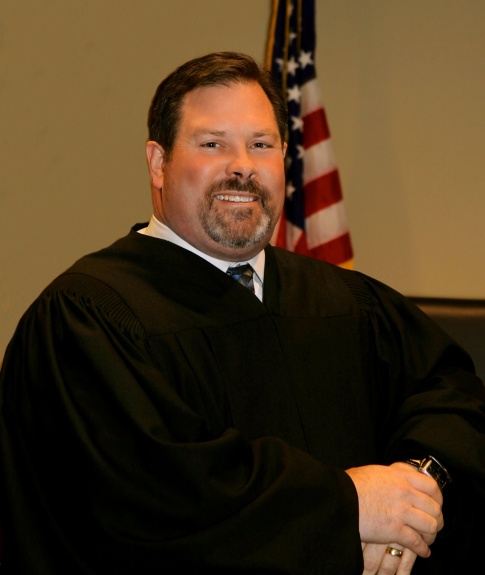 Kevin Rathburn became a full-time faculty member at Northeast Wisconsin Technical College in 2000 after serving as an adjunct instructor for nine years. Prior to that, Mr. Rathburn served for ten years as an Assistant District Attorney for Brown County in Green Bay, Wisconsin. In 2004, Mr. Rathburn became Municipal Judge for the Village of Suamico. Mr. Rathburn holds BAs in political science and economics from St. Norbert College (1987) and a JD from Marquette University Law School (1990).
Kevin Rathburn became a full-time faculty member at Northeast Wisconsin Technical College in 2000 after serving as an adjunct instructor for nine years. Prior to that, Mr. Rathburn served for ten years as an Assistant District Attorney for Brown County in Green Bay, Wisconsin. In 2004, Mr. Rathburn became Municipal Judge for the Village of Suamico. Mr. Rathburn holds BAs in political science and economics from St. Norbert College (1987) and a JD from Marquette University Law School (1990).
While in Law school, Mr. Rathburn served as a law clerk to several Milwaukee Circuit Court Judges handling civil and criminal matters and the appeal of cases from local boards and municipal court in Milwaukee, Wisconsin. He also completed an internship in public sector labor law with the law firm of Mulcahy and Wherry and an internship with Blue Cross & Blue Shield Insurance Company.
Mr. Rathburn is a State Certified Instructor for the Wisconsin Technical College System. He is also certified by the Department of Justice, Training and Standards Board in the areas of Child Maltreatment, Constitutional Law, Corrections Law, Courts and Jurisdiction, Criminal Law, Introduction to Criminal Justice, Criminology, Domestic Violence, Ethics in Criminal Justice, Interviews and Interrogation, Juvenile Law, Report Writing, Sexual Assault and Sensitive Crimes. Mr. Rathburn recently helped create Constitutional Law and Juvenile Law Manuals and update the Criminal Law Manual for the WI. Dept. of Justice, Training and Standards Bureau.
Mr. Rathburn has been a member of the Department of Justice Legal Context Advisory Committee since 2005. He has also served as a Commissioner on the Governor’s Commission on School Violence and the Governor’s Juvenile Justice Commission. He is a past member of the Brown County Youth Aids Committee, Brown County Council on Child Sexual Abuse, Brown County Subcommittee on Underage Drinking, Brown County Consortium on Dysfunctional Families and St. Vincent Hospital’s Child Health Team.
Since 1991 Mr. Rathburn has made presentations on a wide variety of legal topics at numerous conferences including the Wisconsin Jail Association, Wisconsin Juvenile Officers and Juvenile Intake Workers, the State of Wisconsin DARE Officers Association, the Wisconsin LETAO, the Wisconsin Criminal Justice Instructors, the Wisconsin Arson Investigators and the Wisconsin Criminal Investigator’s Association. Mr. Rathburn frequently provides legal updates for law enforcement and correction agencies. He has also provided in-service training for Unified Tactical instructors, administrators, corrections officers, dispatchers and casino security staff.
Since 2007, Mr. Rathburn has been a frequent speaker for the State Supreme Court in its training of Municipal Judges and Court Clerks. Since 2012 Mr. Rathburn has provided Basic Intake Training for Juvenile Intake Workers throughout Wisconsin. He is a trainer for the Wisconsin Child Welfare Professional Development system. Since 2016 Mr. Rathburn has been a featured presenter at the annual Writer’s Police Academy. He recently completed work with James Patterson and Maxine Paetro on a crime novel (The 17th Suspect). He has also presented to officers from England and the Caribbean Islands on multiple occasions in recent years.
In 1994, Mr. Rathburn received the Optimist Law Award for his contribution to the legal field. He also received an Outstanding Teacher Award in 2004, 2005, & 2006 from Who’s Who Among Teachers in American Universities & Colleges and from Who’s Who in Collegiate Faculty in 2007 and 2008. In 2017-18 he was included in Who’s Who in Technical College Faculty. In 2019, Mr. Rathburn received the Excellence in Teaching Award from Northeast Wisconsin Technical College.
Mr. Rathburn says his family is the most important part of his life. He spends as much time as possible with his wife, Beth, and their three sons, Sam, Jack, and Ben. He enjoys landscaping, gardening and walks with Beth and their dog Sophie. He spends many of his late evening hours reading and writing on legal topics. He also likes reading espionage or mystery novels and watching movies; especially westerns. He is an avid Packers fan and enjoys following the Badgers, Brewers, and Bucks
 New York Times and USA Today bestselling author, Heather Graham, majored in theater arts at the University of South Florida. After a stint of several years in dinner theater, back-up vocals, and bartending, she stayed home after the birth of her third child and began to write. Her first book was with Dell, and since then, she has written over two hundred novels and novellas including category, suspense, historical romance, vampire fiction, time travel, occult, sci-fi, young adult, and Christmas family fare.
New York Times and USA Today bestselling author, Heather Graham, majored in theater arts at the University of South Florida. After a stint of several years in dinner theater, back-up vocals, and bartending, she stayed home after the birth of her third child and began to write. Her first book was with Dell, and since then, she has written over two hundred novels and novellas including category, suspense, historical romance, vampire fiction, time travel, occult, sci-fi, young adult, and Christmas family fare.
She is pleased to have been published in approximately twenty-five languages. She has written over 200 novels and has 60 million books in print. Heather has been honored with awards from booksellers and writers’ organizations for excellence in her work, and she is the proud to be a recipient of the Silver Bullet from Thriller Writers and was awarded the prestigious Thriller Master Award in 2016. She is also a recipient of the Lifetime Achievement Award from RWA. Heather has had books selected for the Doubleday Book Club and the Literary Guild, and has been quoted, interviewed, or featured in such publications as The Nation, Redbook, Mystery Book Club, People and USA Today and appeared on many newscasts including Today, Entertainment Tonight and local television.
Heather loves travel and anything that has to do with the water, and is a certified scuba diver. She also loves ballroom dancing. Each year she hosts a Vampire Ball and Dinner theater raising money for the Pediatric Aids Society and in 2006 she hosted the first Writers for New Orleans Workshop to benefit the stricken Gulf Region. She is also the founder of “The Slush Pile
Players,” presenting something that’s “almost like entertainment” for various conferences and benefits. Married since high school graduation and the mother of five, her greatest love in life remains her family, but she also believes her career has been an incredible gift, and she is grateful every day to be doing something that she loves so very much for a living.

www.writerspoliceacademy.online









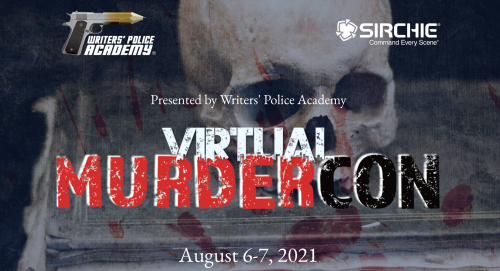




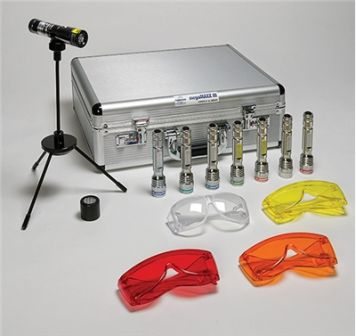




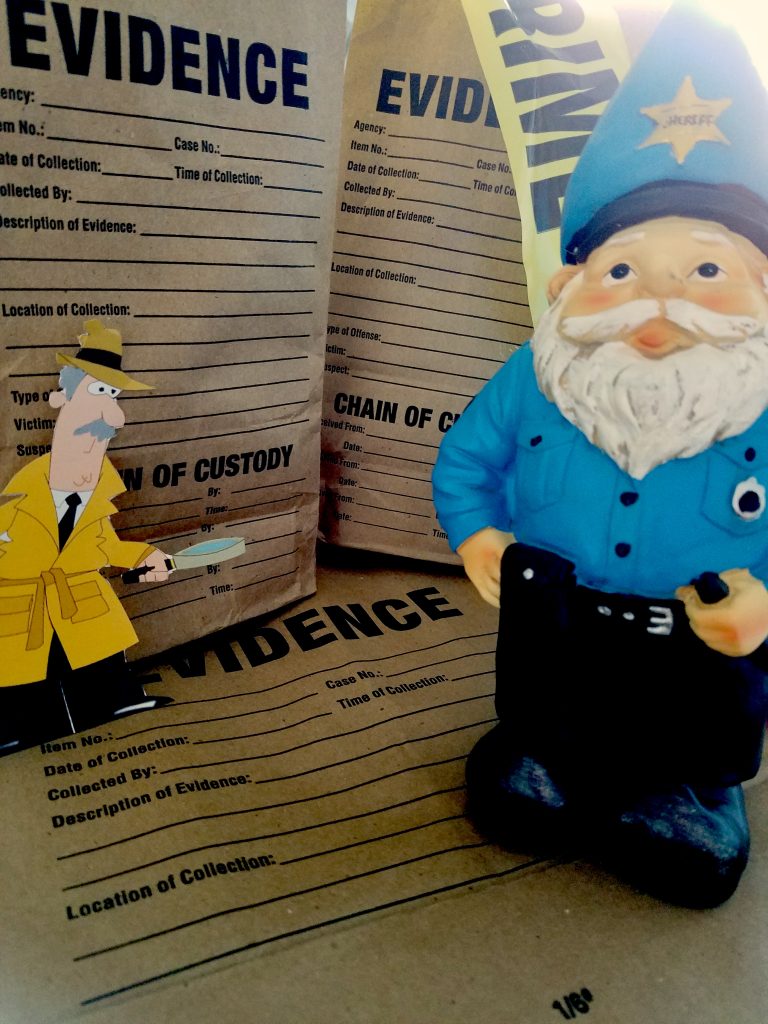
















 And, as always, smack-dab in the center of the front door were three fairly fresh chicken feet that were tied together at the ankles with a piece of colorful twine. The collection of gnarly toes and bony knuckles dangled from a rusty thumbtack. Nothing odd at all … for Miss Evelyn. I knocked again. The “decor” hadn’t changed in all the years I’d gone there. Not a thing.
And, as always, smack-dab in the center of the front door were three fairly fresh chicken feet that were tied together at the ankles with a piece of colorful twine. The collection of gnarly toes and bony knuckles dangled from a rusty thumbtack. Nothing odd at all … for Miss Evelyn. I knocked again. The “decor” hadn’t changed in all the years I’d gone there. Not a thing.

 Carrie Stuart Parks is an award-winning, internationally known forensic artist. She travels across the US and Canada teaching courses in forensic art to law enforcement professionals including the FBI, Secret Service, and RCMP, and is the largest instructor of forensic art in the world. Her best-selling novels in the mystery/suspense/thriller genre have garnered numerous awards including several Carols, Inspys, the Christy, Golden Scroll, Maxwell, and Wright. As a professional fine artist, she has written and illustrated best-selling art books for North Light Publishers.
Carrie Stuart Parks is an award-winning, internationally known forensic artist. She travels across the US and Canada teaching courses in forensic art to law enforcement professionals including the FBI, Secret Service, and RCMP, and is the largest instructor of forensic art in the world. Her best-selling novels in the mystery/suspense/thriller genre have garnered numerous awards including several Carols, Inspys, the Christy, Golden Scroll, Maxwell, and Wright. As a professional fine artist, she has written and illustrated best-selling art books for North Light Publishers. Sheri Lewis Wohl is a 30-year veteran of the federal judiciary, a search and rescue K9 handler, and the author of more than fifteen novels, several of which feature search dogs. She is a field ready member of search and rescue in Eastern Washington and for the last nine years, has been a human remains detection K9 handler deployed on missions throughout Washington, Idaho, and Montana.
Sheri Lewis Wohl is a 30-year veteran of the federal judiciary, a search and rescue K9 handler, and the author of more than fifteen novels, several of which feature search dogs. She is a field ready member of search and rescue in Eastern Washington and for the last nine years, has been a human remains detection K9 handler deployed on missions throughout Washington, Idaho, and Montana. Kevin Rathburn became a full-time faculty member at Northeast Wisconsin Technical College in 2000 after serving as an adjunct instructor for nine years. Prior to that, Mr. Rathburn served for ten years as an Assistant District Attorney for Brown County in Green Bay, Wisconsin. In 2004, Mr. Rathburn became Municipal Judge for the Village of Suamico. Mr. Rathburn holds BAs in political science and economics from St. Norbert College (1987) and a JD from Marquette University Law School (1990).
Kevin Rathburn became a full-time faculty member at Northeast Wisconsin Technical College in 2000 after serving as an adjunct instructor for nine years. Prior to that, Mr. Rathburn served for ten years as an Assistant District Attorney for Brown County in Green Bay, Wisconsin. In 2004, Mr. Rathburn became Municipal Judge for the Village of Suamico. Mr. Rathburn holds BAs in political science and economics from St. Norbert College (1987) and a JD from Marquette University Law School (1990). New York Times and USA Today bestselling author, Heather Graham, majored in theater arts at the University of South Florida. After a stint of several years in dinner theater, back-up vocals, and bartending, she stayed home after the birth of her third child and began to write. Her first book was with Dell, and since then, she has written over two hundred novels and novellas including category, suspense, historical romance, vampire fiction, time travel, occult, sci-fi, young adult, and Christmas family fare.
New York Times and USA Today bestselling author, Heather Graham, majored in theater arts at the University of South Florida. After a stint of several years in dinner theater, back-up vocals, and bartending, she stayed home after the birth of her third child and began to write. Her first book was with Dell, and since then, she has written over two hundred novels and novellas including category, suspense, historical romance, vampire fiction, time travel, occult, sci-fi, young adult, and Christmas family fare.

 Human or animal tissue – Collect approximately two cubic inches of red muscular tissue (if possible). As with other DNA evidence collection of solid material, use clean forceps or gloves. Remember to change gloves when handling different items to avoid cross-contamination. Place the tissue in a clean, airtight container. Never use formalin or other preservatives such as formaldahyde. When shipping to a testing lab, freeze the sample and send via overnight transportation service, packed in dry ice in a styrofoam container, or hand deliver.
Human or animal tissue – Collect approximately two cubic inches of red muscular tissue (if possible). As with other DNA evidence collection of solid material, use clean forceps or gloves. Remember to change gloves when handling different items to avoid cross-contamination. Place the tissue in a clean, airtight container. Never use formalin or other preservatives such as formaldahyde. When shipping to a testing lab, freeze the sample and send via overnight transportation service, packed in dry ice in a styrofoam container, or hand deliver. Bones and teeth – Use forceps and/or gloved hands for collection. Collect whole bones if possible. Place bones and teeth in paper containers with sealed edges. Store out of light and humidity, and may be frozen if samples are previously air dried.
Bones and teeth – Use forceps and/or gloved hands for collection. Collect whole bones if possible. Place bones and teeth in paper containers with sealed edges. Store out of light and humidity, and may be frozen if samples are previously air dried.

